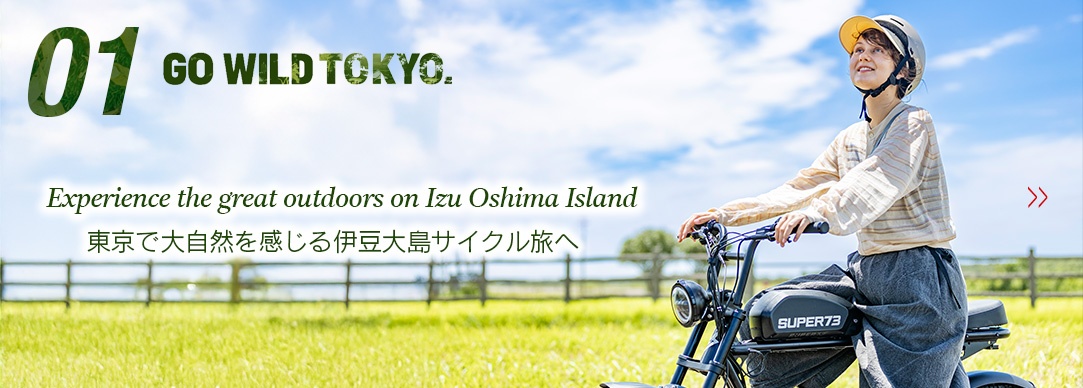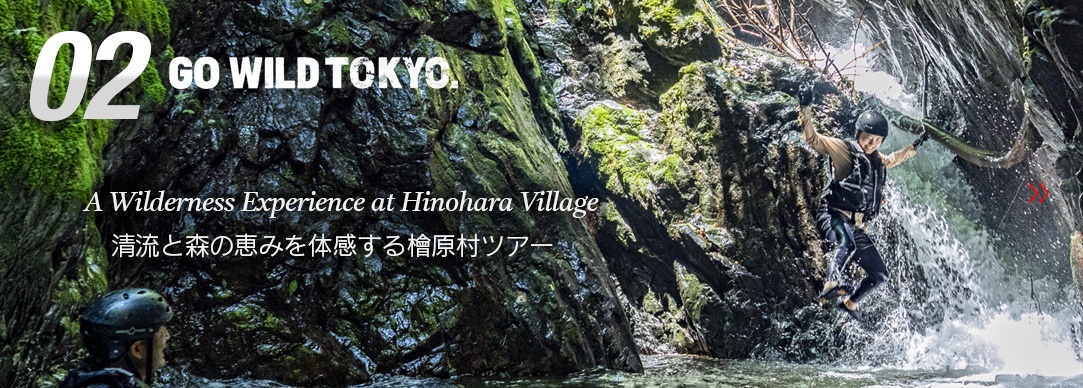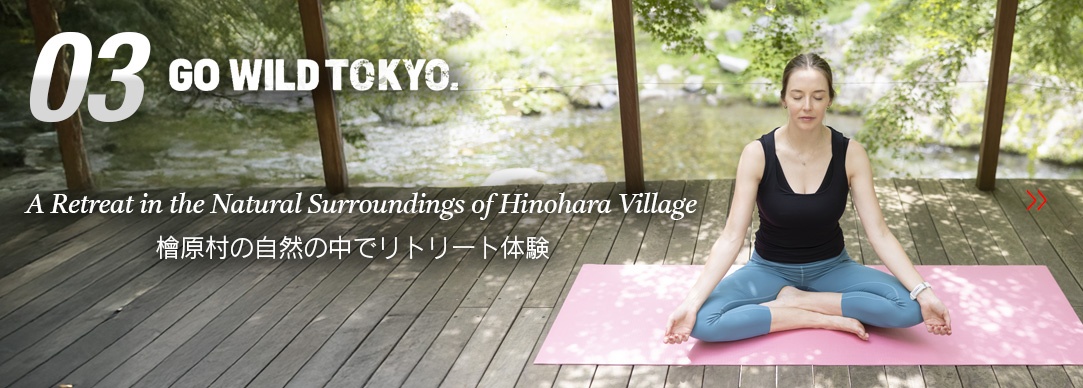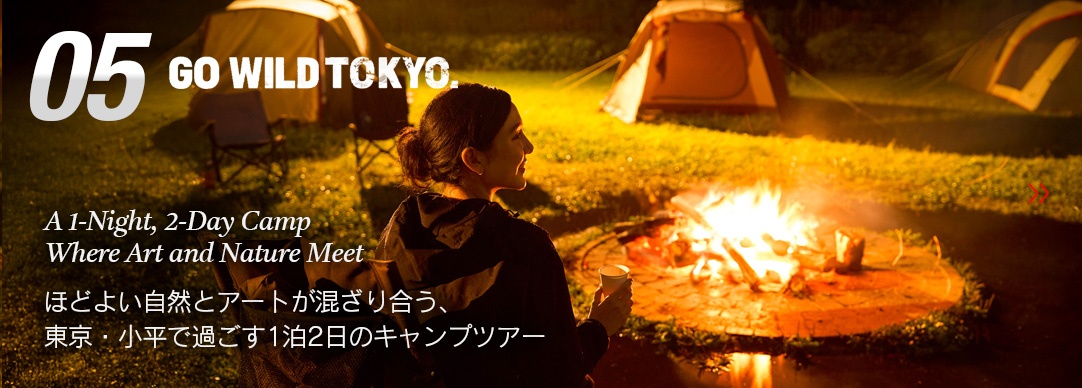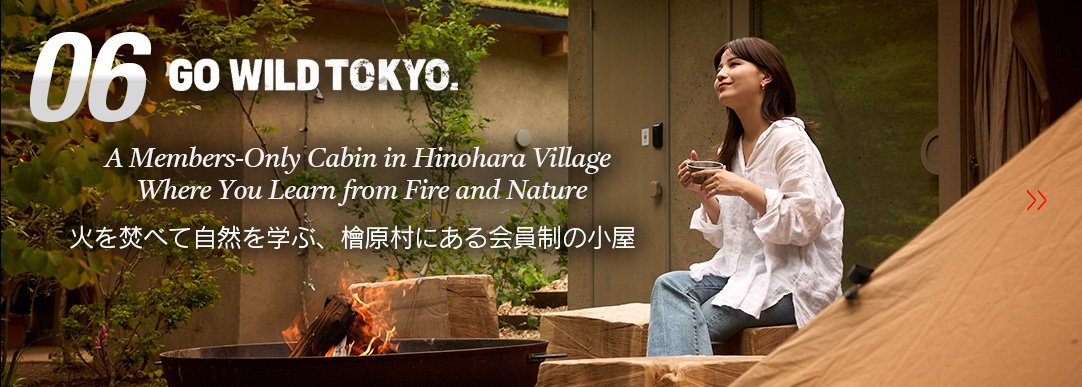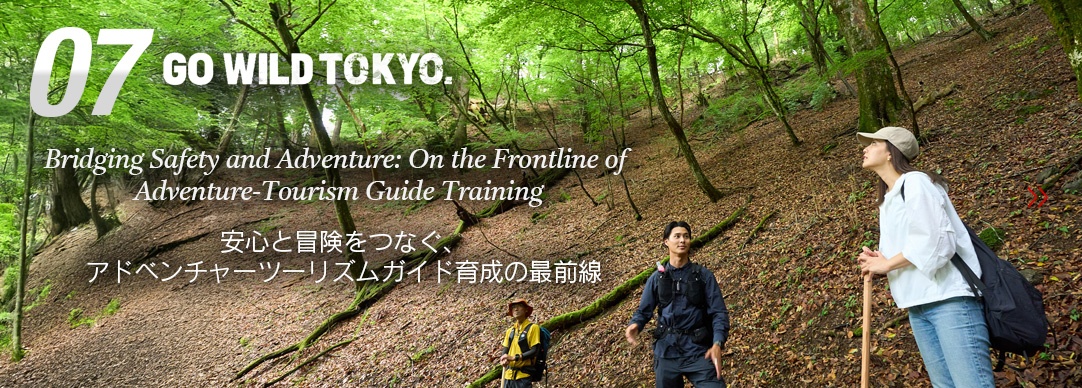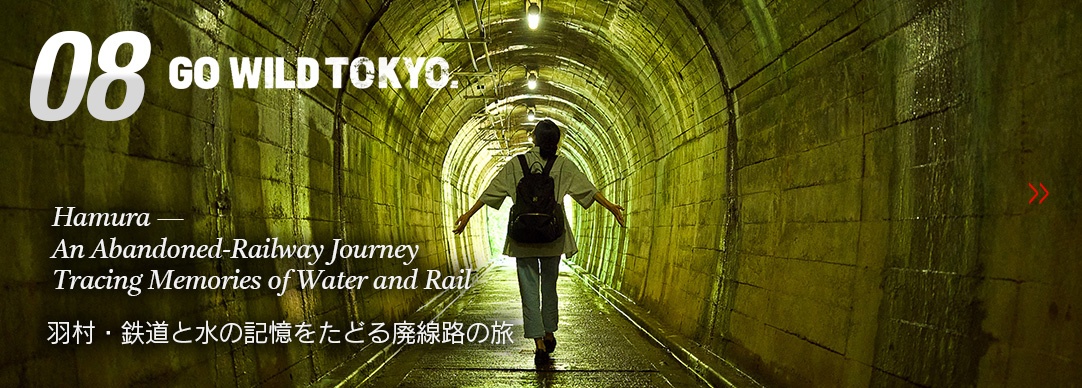GO WILD TOKYO 2/ A Wilderness Experience at Hinohara Village
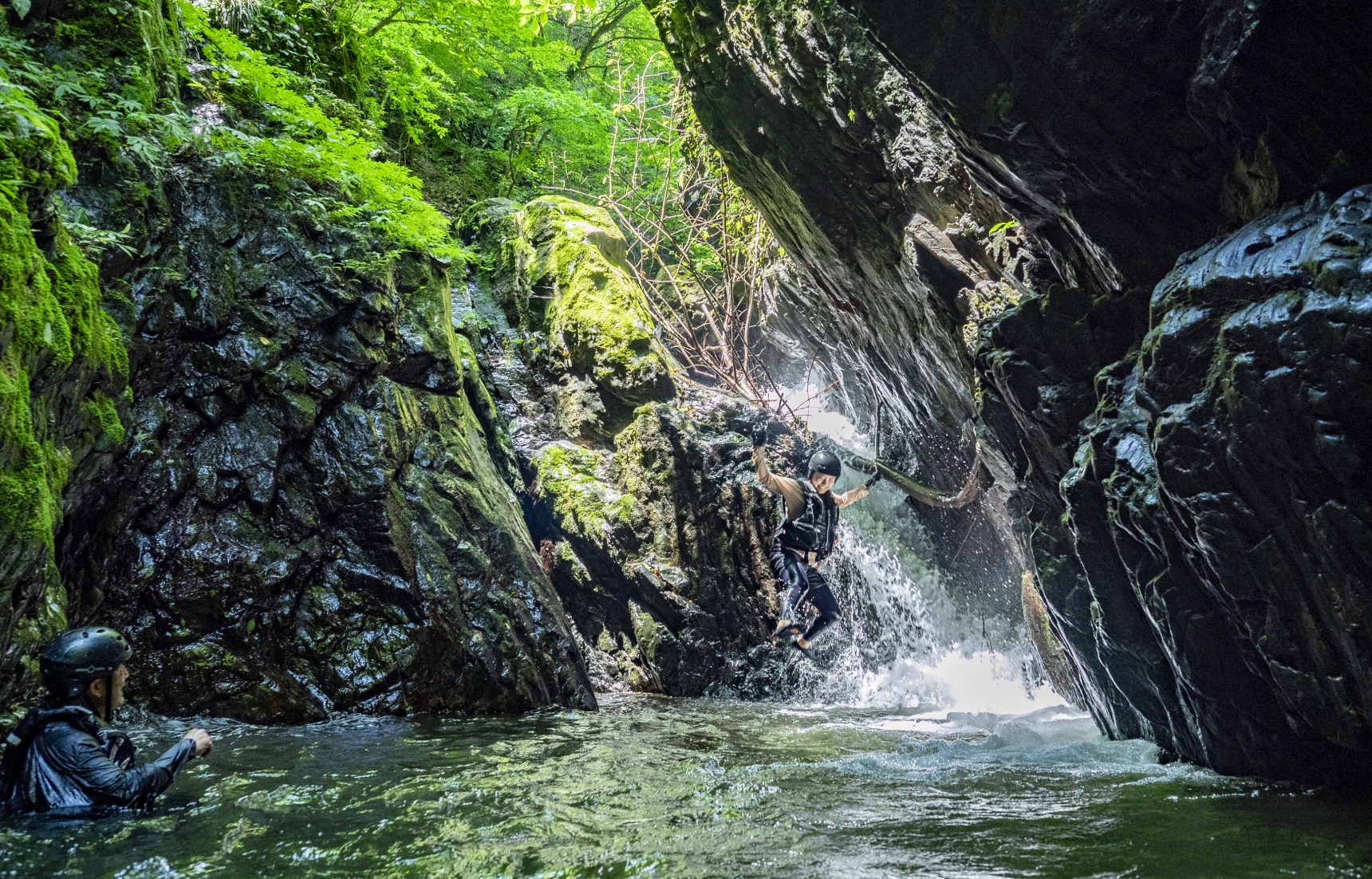
Tokyo is one of Japan’s 47 prefectures, and its borders stretch far beyond the central area’s towering skyline and bustling streets. This is one of a series introducing parts of Tokyo known for natural wonders, spectacular landscapes, and numerous species of wildlife for the adventurous traveler.
By AAJ Editorial TeamHinohara Village is a rural village in Tokyo Prefecture that is only a two-hour journey from Shinjuku Station. Some 90 percent of Hinohara is covered in forest, making it an ideal location where visitors can enjoy activities such as trekking, canyoning, wood chopping, and dining on foods made of seasonal ingredients.
To explore this area, I joined an adventure tour organized by the NPO Fuji no Mori (Fuji Forest). The organization’s theme is "creating forests for the future," and it serves as a connection point between residents and nature. Currently, they also manage two village-owned forest areas (Education Forest and Hometown Forest), where they conduct various projects including environmental education, conservation, and ecotourism.
Canyoning: Crystal Waters and Tall Waterfalls
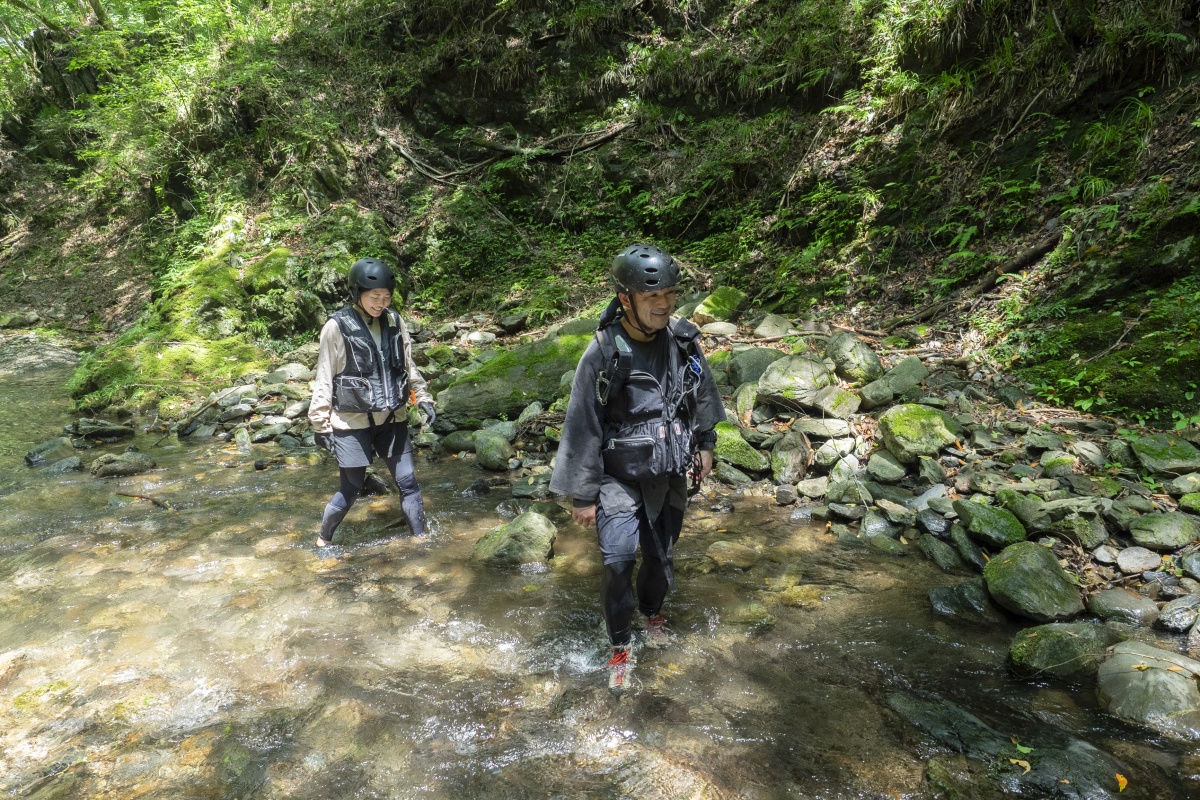
My guide shared fascinating tidbits about nature and history as we walked upstream.
Hinohara Village is called “The Village of Aki River Headwaters" because it's the source of the Aki River, the largest tributary of the Tama River. The mountain streams here feature over 50 waterfalls of various sizes, offering visitors a mystical landscape of beautiful, crystal-clear waters. Our first adventure of the tour was canyoning up some of these pristine waters to Kurakake Falls. The slope of the riverbed on this beginner-level route was gentle, with water levels only ankle-deep. The mountain water was bracingly cold, while the breeze was refreshingly pleasant.
Our guide is Hiroshi Jinkawa. He studies ninja culture on a daily basis and develops programs to apply the wisdom he has gained there to the modern world. He is well versed in Hinohara's history and Japanese culture and guided me around in his ninja attire. "This area bordered three provinces during the Sengoku (Warring States) period in the sixteenth century,” he told me. “It was an ideal location as a base for ninja spies and strategists.”
As we nimbly climbed the stream in a ninja-like spirit, observing the surrounding rocks and trees that likely hadn’t changed much since the Sengoku period, we reached a spot where the water was waist-deep.
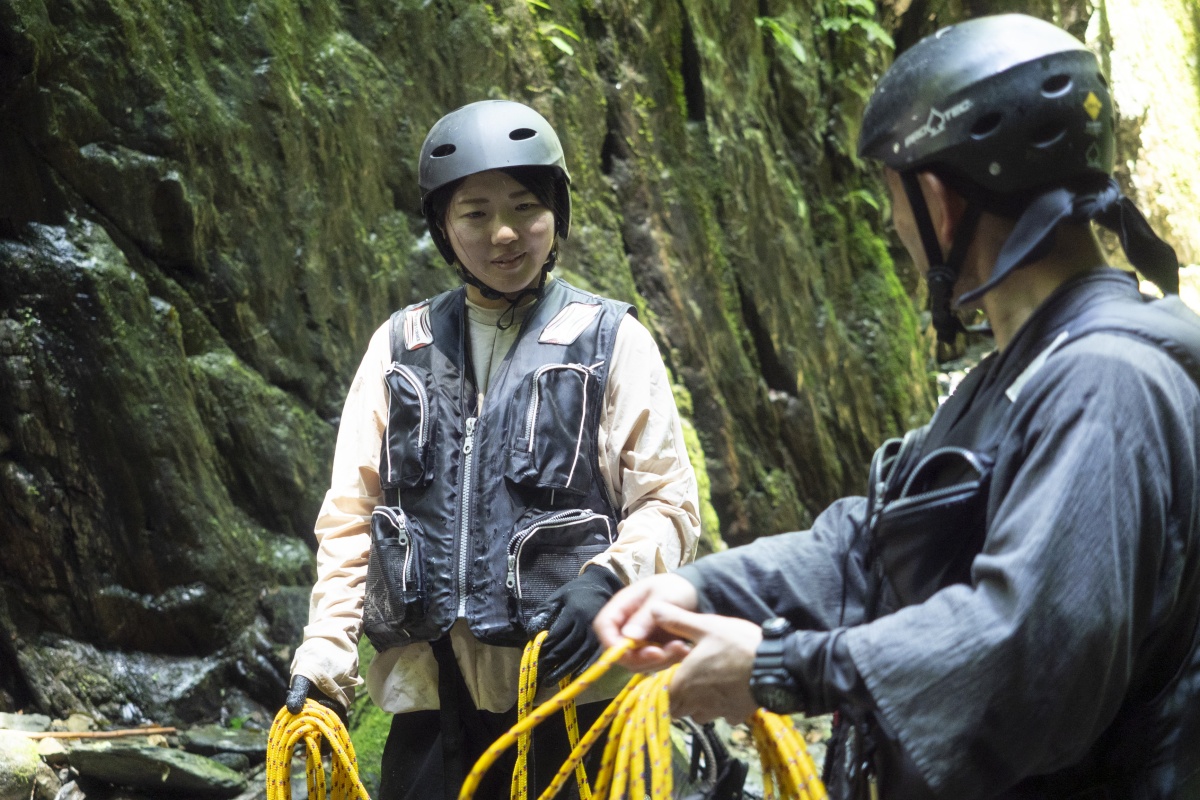
I learned rescue techniques using throw ropes that float on water.
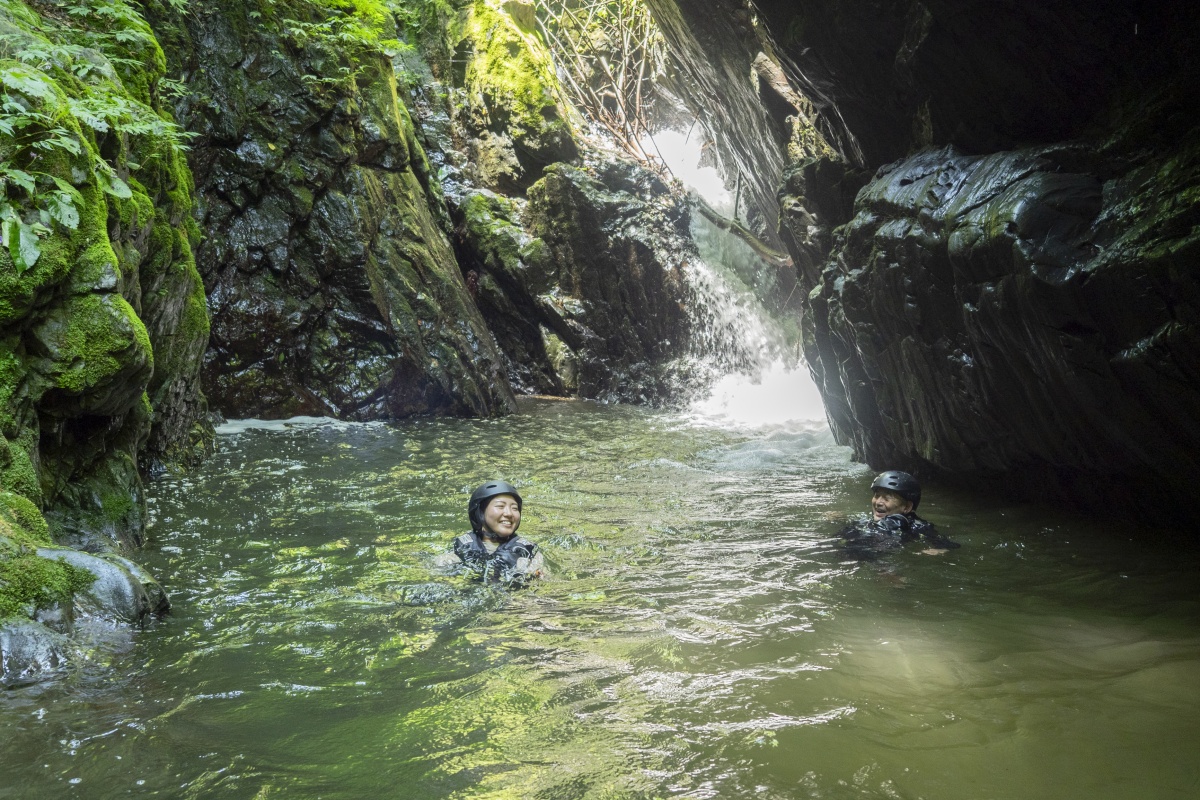
Safety assured, I dove into the plunge pool at the base of the waterfall! The clear stream cooled my entire body.
As we pushed through the water, Kurakake Falls appeared from behind a large rock. The water of the two-tiered waterfall, with a total drop of seven meters, flows between the rocks on either side, its sound amplified as it echoed off the rock walls. Since the falls are only visible by getting into the water, this gave me an indescribable sense of exclusivity and achievement. Away from prying eyes, I indulged my inner child, thoroughly enjoying the time spent showering and swimming in the plunge pool at the base of the waterfall.
A Hand-made, Wood-fired Pizza Lunch
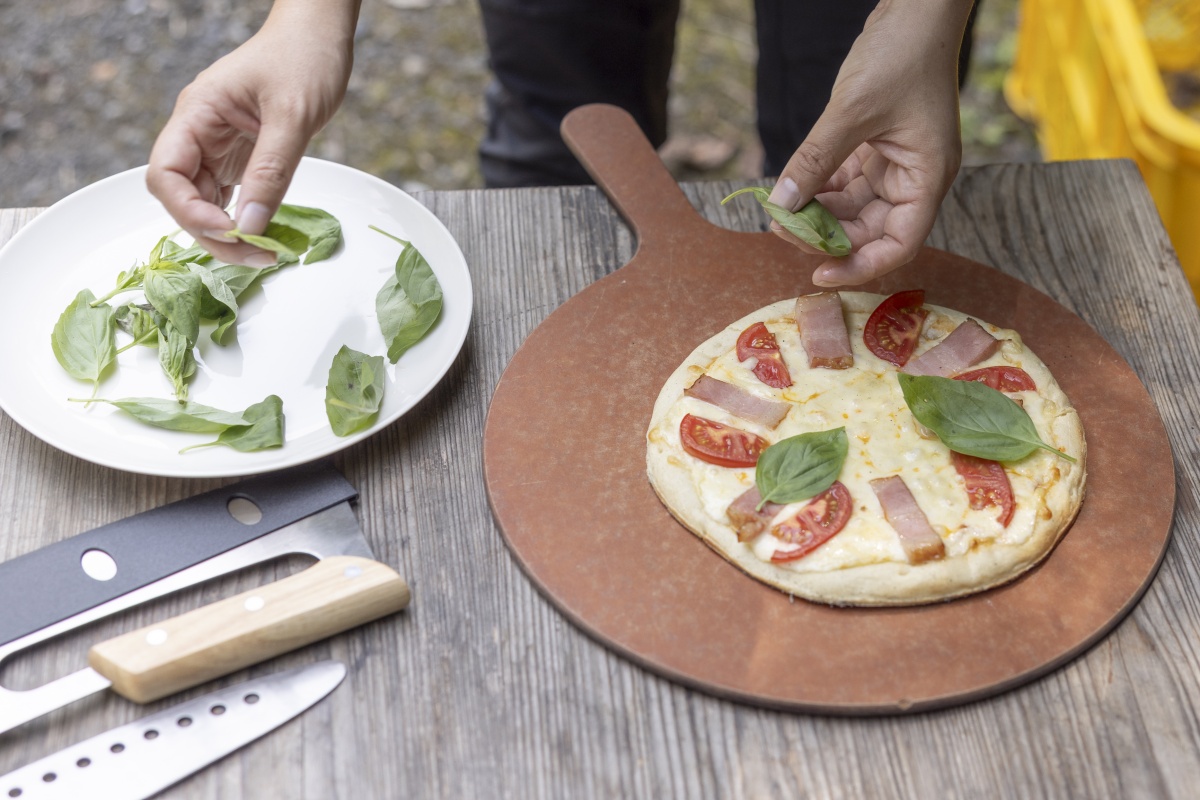
Lavishly topped with fresh basil grown in Fuji Forest.
After the exertion from stream climbing, it was time for a much-anticipated lunch. Depending on the season and program, options can include somen, a popular summer noodle dish, Dutch oven dishes, BBQ, or curry. On this day, however, we had the ever-popular stone oven pizza, a staple at Fuji Forest, which we helped make ourselves.
We started by topping the pizza dough with fresh tomatoes, basil, bacon, and cheese. Then we baked it in a wood-fired stone oven.
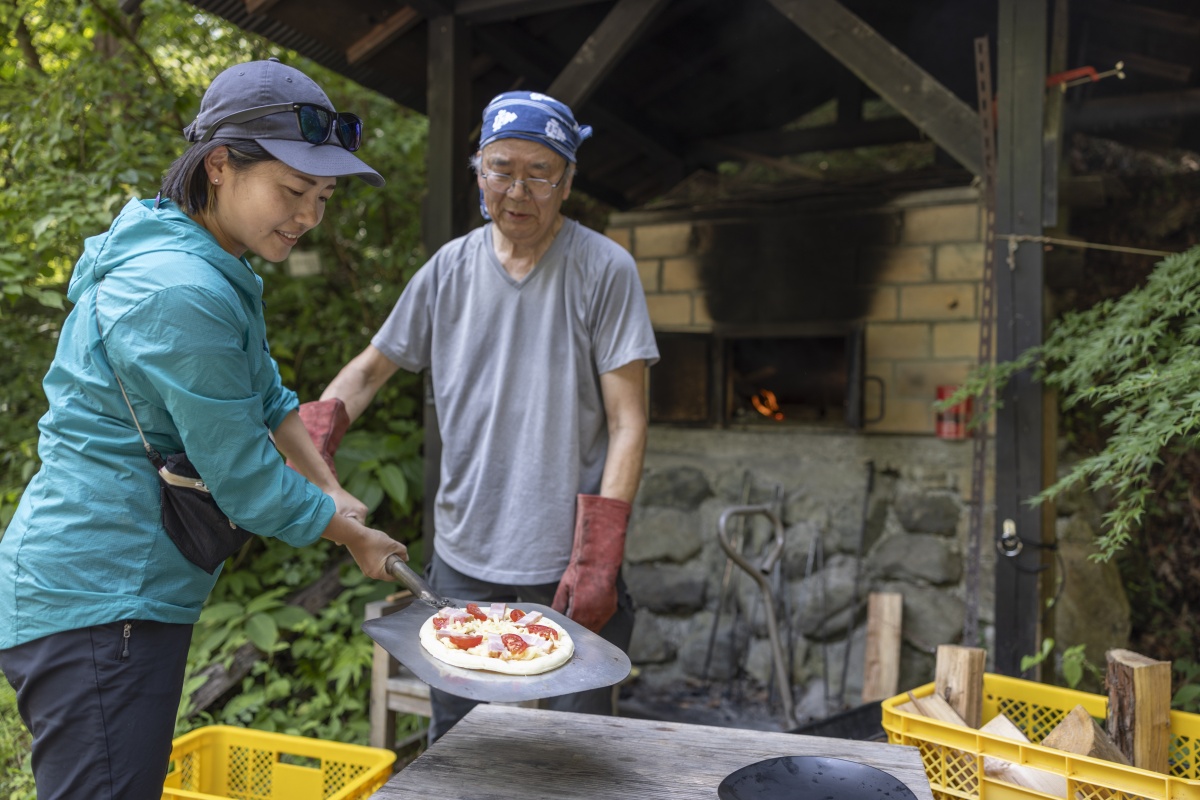
Once topped, the dough is placed on a pizza peel and slid into the oven.

The inside of the pizza oven reaches temperatures of nearly 400 to 500 degrees Celsius. You can observe the burning wood and feel the heat.
"Wood is carbon neutral, which means that when it is burned as firewood, its carbon dioxide (CO2) emissions and absorption offset each other. Recently, it's often viewed from this SDGs perspective. But above all, pizza cooked with firewood tastes exceptionally delicious! We believe that this simple delight of 'deliciousness' can be a gateway for people to pay attention to trees and nature," explains Kazuo Ozawa from NPO Fuji Forest.
I carried the freshly baked pizzas to a scenic wood deck built on the mountainside and finished it off with a beer. Eating in this private space surrounded by tall trees and listening to birdsong was the epitome of luxury. In the course of our busy daily lives, it is often difficult to do nothing. I wondered how nice it would be to imagine a place like this at those times.
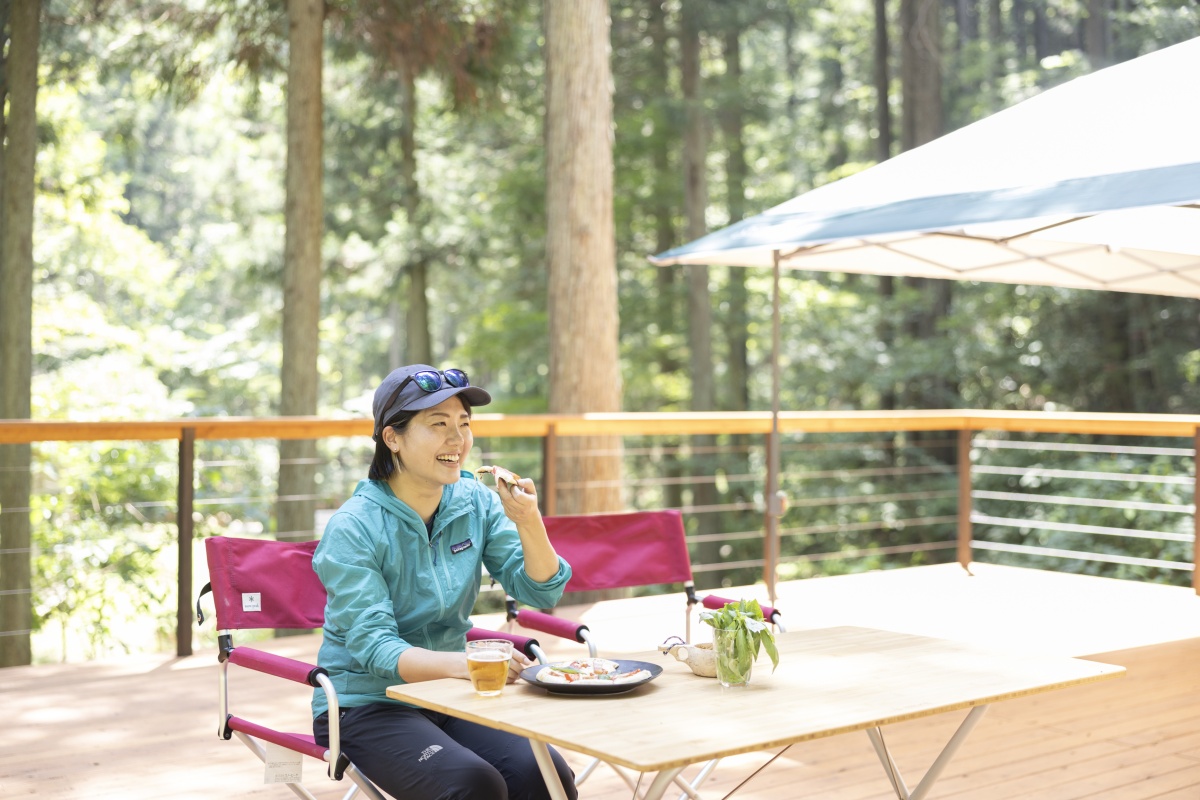
Lunchtime on a pleasant wood deck where refreshing breezes flow through.
A History Lesson in a Natural Classroom
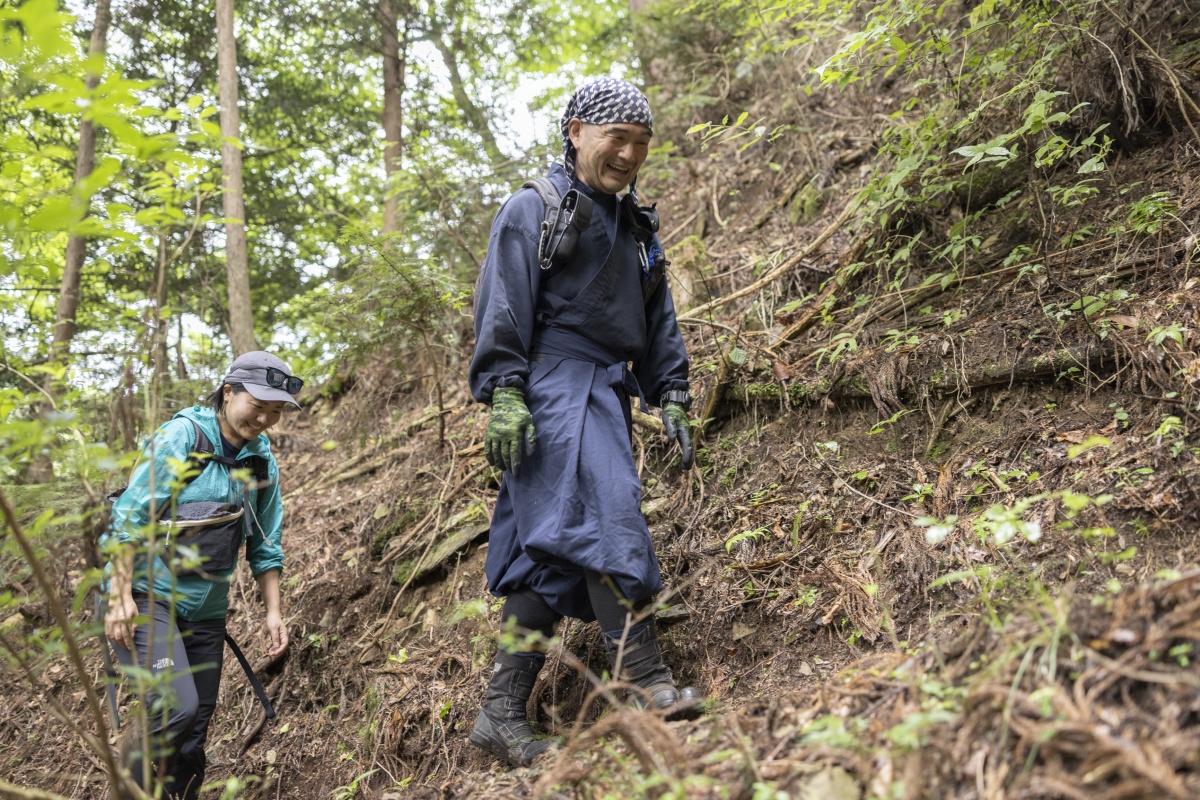
I learned how to ascend and descend the mountain slope without getting tired. The course covered a comfortable distance of 2 kilometers.
After finishing the meal and taking a short break, we headed out for some forest trekking. The nature observation trail behind Fuji Forest marks the entrance to the forest. As we climbed the mountain path, I was taught to sense the presence of animals by spotting game trails branching off from our course and notice tree trunks stripped bare by deer feeding on the bark.
We soon came across a view where a planted forest of evenly spaced cedar trees and a natural forest stood side by side, separated only by the path. About 60 percent of Hinohara Village’s woodland was cedar and cypress, planted about 50 years ago for timber production. While some people associate human intervention in nature with environmental destruction, this wasn’t always the case. Particularly in satoyama, the area adjacent to human settlements, the practice of cutting trees for firewood, charcoal, and tools, and maintaining the forest, actually preserved the natural ecosystems. However, with the fuel revolution and mass importation of fossil fuels like oil and natural gas, firewood and charcoal became unnecessary products. As human intervention in satoyama decreased, the forests gradually deteriorated.
Misako Aizawa of NPO Fuji Forest explained how the transformation took place. " Until about 100 years ago, Hinohara Village was a charcoal-producing village,” she said. “When human intervention ceased, the forest transformed into a dark, dense place. Forest maintenance began again only about a decade ago. By thinning evergreen trees that remain leafy in winter and increasing deciduous broadleaf trees, we have brought light into the winter forest. That attracted insects, which in turn increased the bird and animal population. It's precisely because it's a managed satoyama that we can feel a deeper connection with the forest."
Firewood Preparation: Connecting with the Forest
The final activity of the itinerary was a firewood preparation experience, where I learned about forest regeneration and conservation. We worked with thinned trees from the planted forest that were already felled. We used chainsaws to cut the logs into sections and then split them into firewood-sized pieces. Those who use wood stoves for heating are likely to have a deep appreciation for wood as a vital energy source, but for city dwellers, close contact with trees doesn’t happen often. This hands-on process of touching the wood, splitting it, and seeing it used for cooking was a valuable experience that made me reconsider our relationship with the forest.
"We also offer other environmental conservation programs," said Fuji Forests’ Kazuo Ozawa. "These include thinning experiences in which participants fell cedar or cypress trees from the trunk, using saws, wedges, and ropes, and pruning experiences where we cut and remove excess branches that won’t be used for timber. Through these forest management activities, we hope people will feel a closer connection to trees."
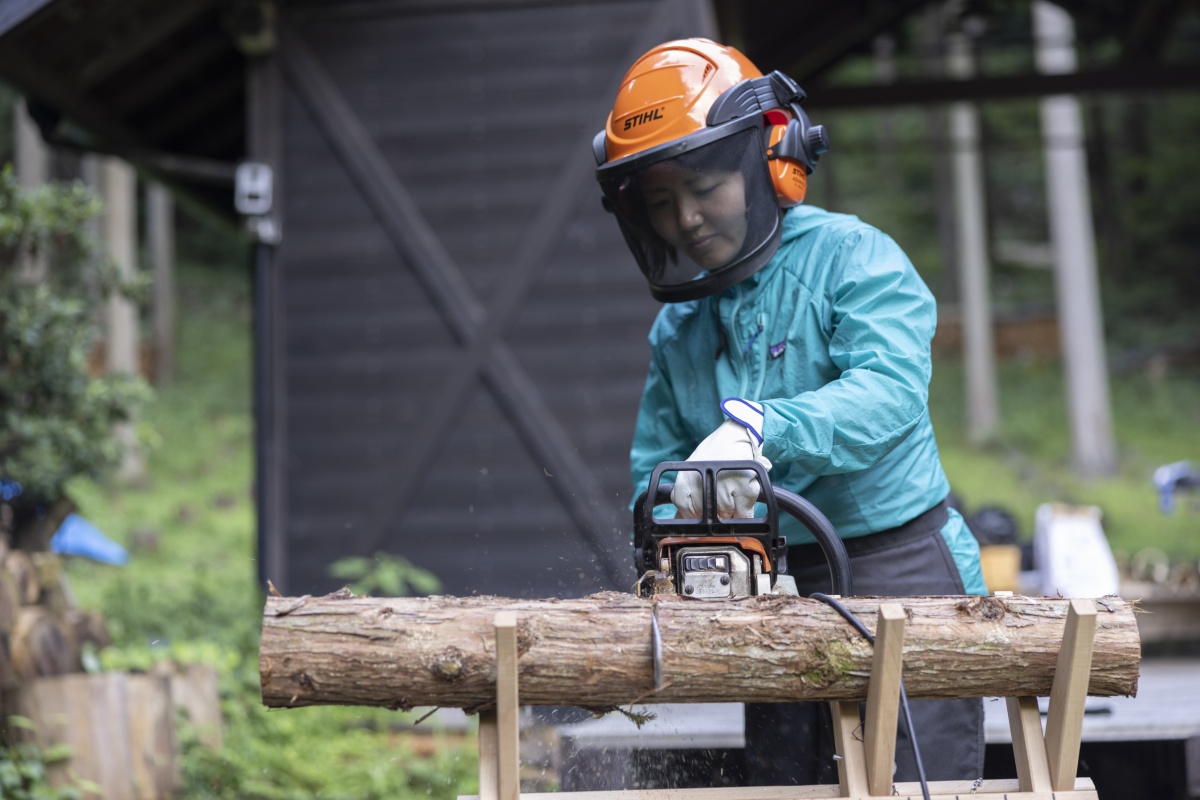
Cutting the felled and de-branched tree trunk into short sections with a chainsaw requires intense focus.
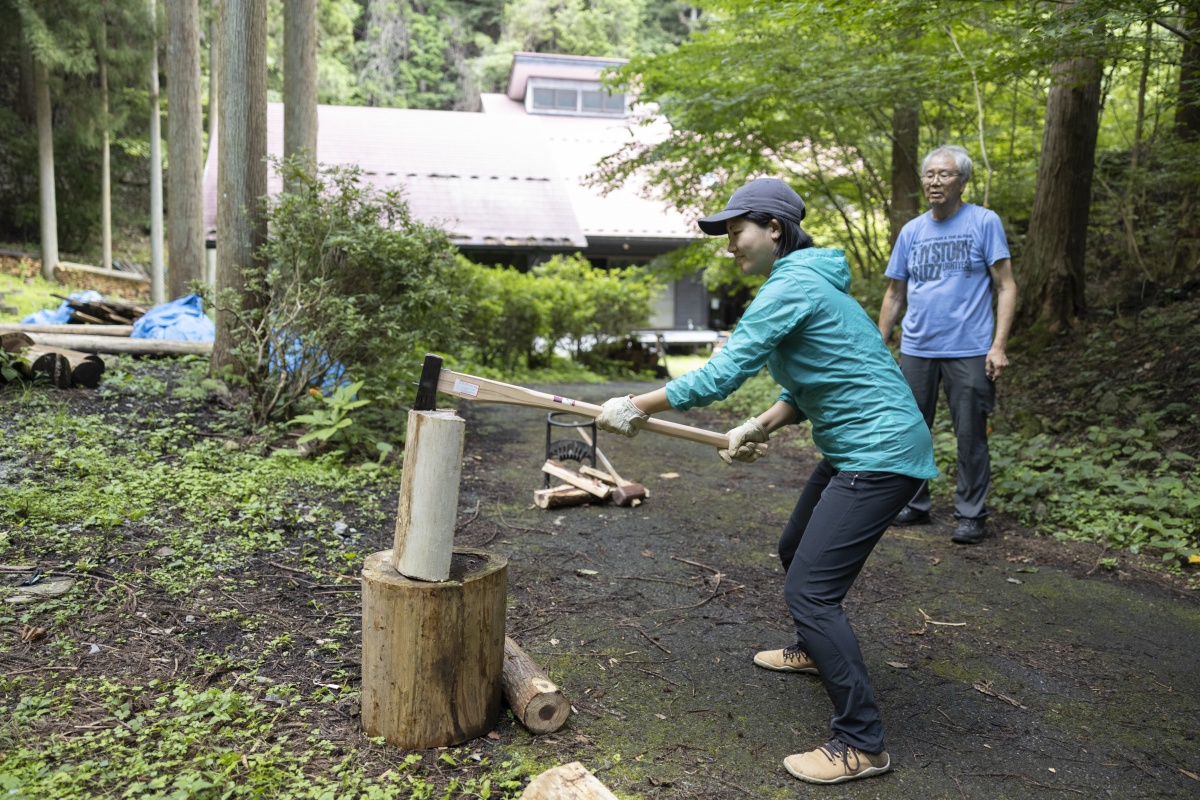
“Just let the axe fall,” I was told. At first, I made a lot of mistakes, but gradually I started to succeed.
"Recently, many companies are incorporating adventure tourism as part of their training programs, finding it useful for team building," said my guide, Jinkawa. "It’s a way to observe teammates' personalities and thought processes in action. Sometimes, those who usually lead the team prove their ability to unite everyone in challenging situations. Other times, unexpected individuals suddenly demonstrate leadership. We also welcome solo visitors who are interested in forest conservation or simply want to connect with nature."
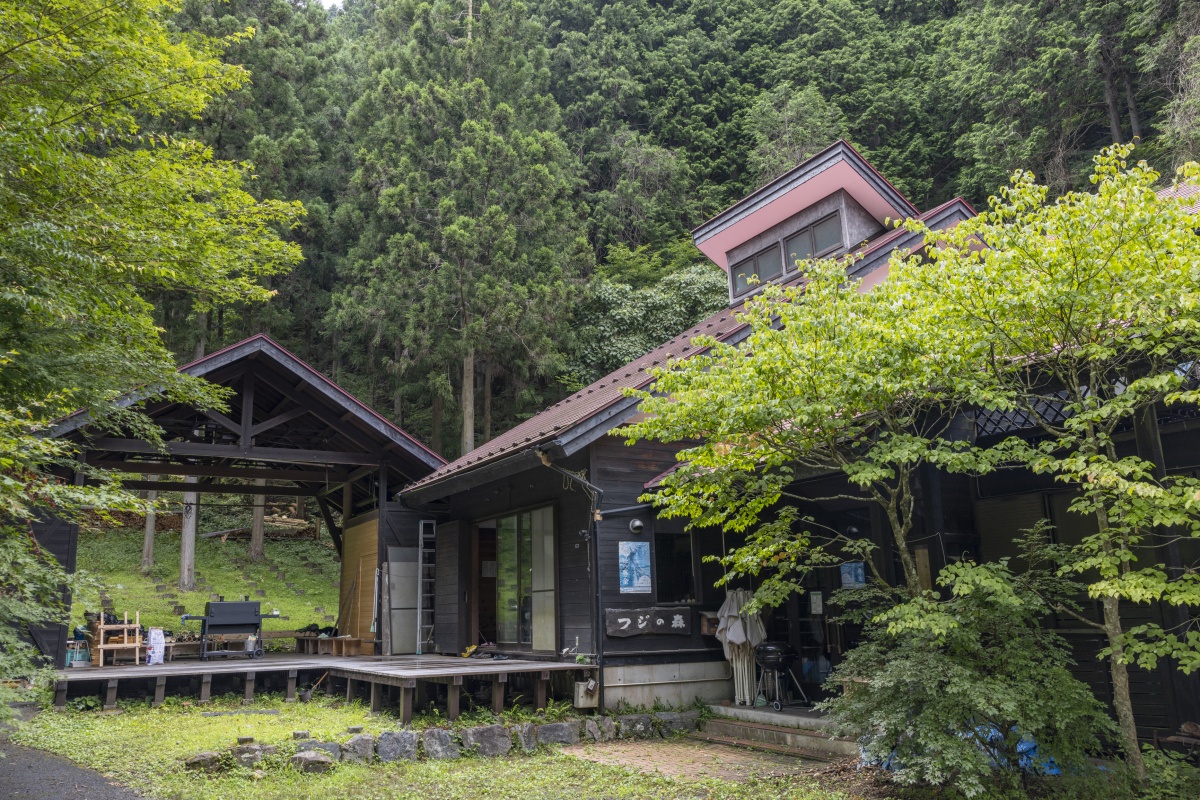
At Fuji Forest, there are covered outdoor spaces and a large indoor hall, allowing visitors to enjoy the natural surroundings regardless of the weather.
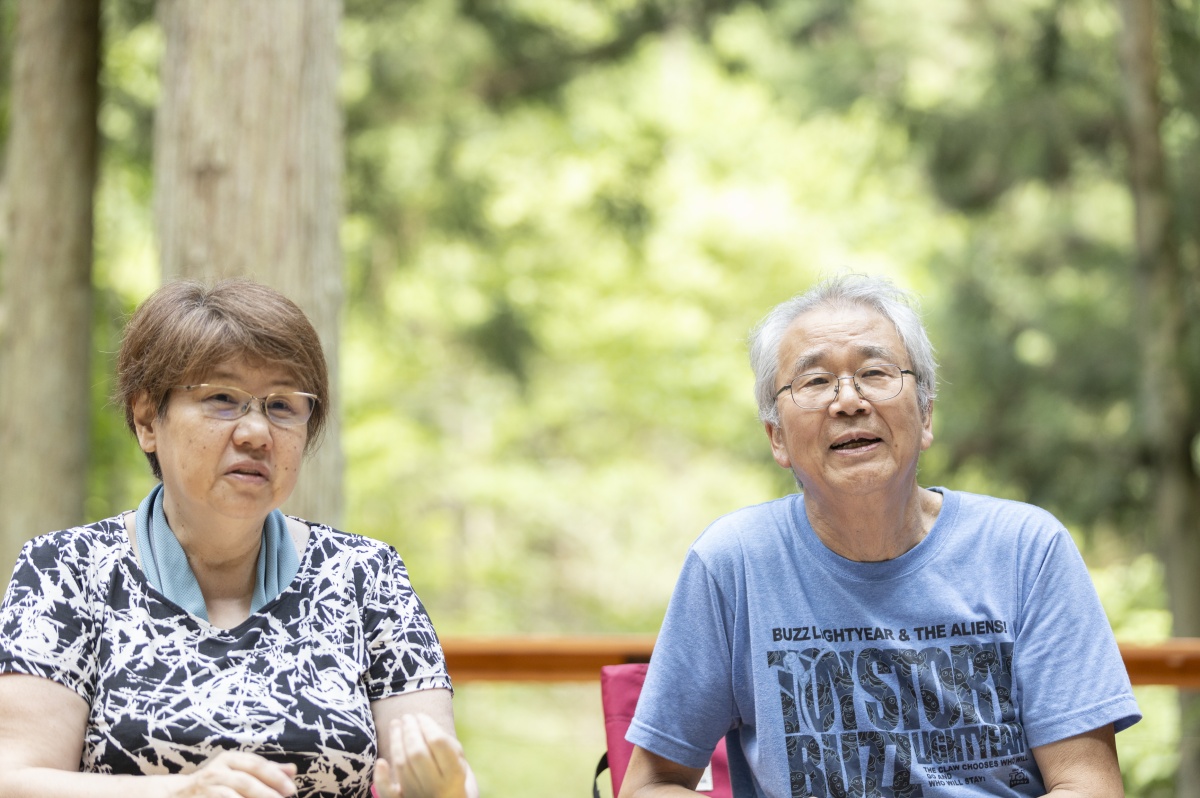
Misako Aizawa (left), Director and Secretary-General of NPO Fuji Forest, and Kazuo Ozawa, also a Director of Fuji Forest.

Fuji Forest
Address: 5990-1 Hinohara, Nishitama District, Tokyo [MAP]
Phone: 042-598-6928
Hours: 9:00 AM - 6:00 PM (Closed on Mondays)
Website: http://www.fujinomori.net/index.html
By car: Approximately 25 km from the “Akiruno IC” of the Ken-O Expressway.
By train and bus: Take the Nishi Tokyo Bus from JR Musashi-Itsukaichi Station on the Itsukaichi Line, get off at Nango, from which it is about a 5 minute walk.

[Adventure Tourist]
Yumi Kurosawa
Editor/Writer and Director of “yaso”. After working in Tokyo as an editor and writer primarily for wellness and outdoor magazines, she relocated to the foothills of Mt. Yatsugatake in Nagano in 2021. Currently, she also serves as the director of “yaso,” a project focused on the utilization of forest resources. She spends the entire year in the mountains, hiking, camping, trail running, and snowboarding.
※This content is supported by a grant from the Tokyo Convention & Visitors Bureau for the Promotion of Adventure Travel.
Text by Yumi Kurosawa and Photo by Atsushi Ishihara


